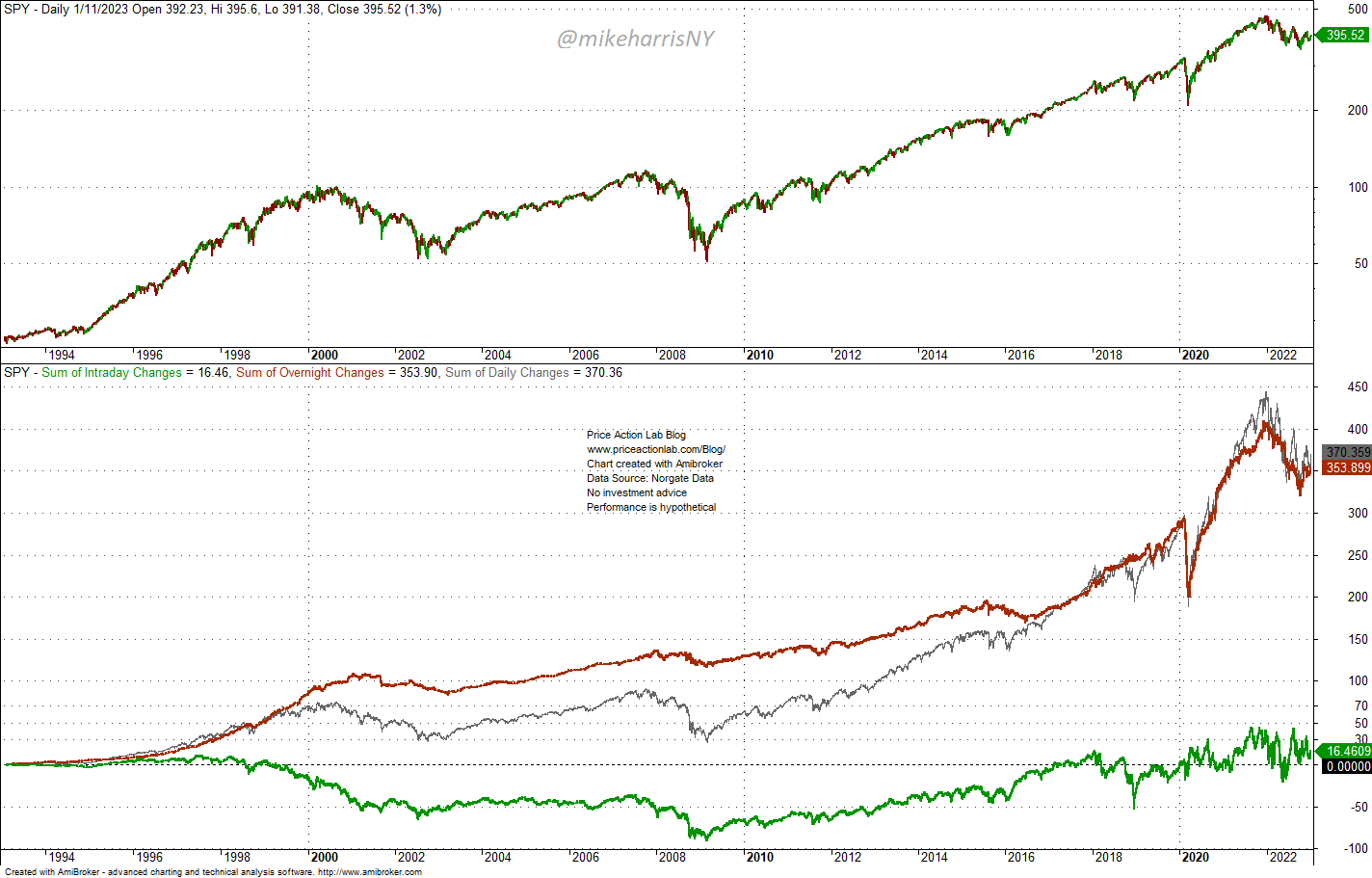The overnight effect in US large caps is fading away after the publicity it received in the last three years and the issuance of ETFs to take advantage of it. Updated: January 31, 2023.
There are numerous articles in this blog about the overnight effect in SPY ETF and also in other markets and individual equities from the last 10 years.
The overnight effect has been known to some traders since the 90s but only recently became widely known. ETFs were also developed to take advantage of it. However, it appears that the effect is fading away. This is the normal evolution of most price action anomalies after the trade gets crowded.
Below is a chart of SPY ETF since inception with overnight gains (red line), regular trading hours gains (green line), and total gains (gray line), in points.
Until March 2017, all gains in the SPY ETF were due to overnight changes. This is seen from the gray line intercepting the red line.
After the publicity the overnight effect has received in the last three years, it is fading away. Update: January 31, 2023
Since 2022, the regular trading hours have generated a loss of 4.36 points versus a loss of 59.3 points for the overnight, i.e., the day session has outperformed the overnight by a wide margin. Year-to-date, regular trading hours have 26.2 points gain versus a loss of 0.6 points for the overnight.
We may be looking at a regime change due to this anomaly fading away.
Disclaimer: The premium articles are provided for informational purposes only and do not constitute investment advice or actionable content. We do not warrant the accuracy, completeness, fitness, or timeliness for any particular purposes of the premium articles. Under no circumstances should the premium articles be treated as financial advice. The author of this website is not a registered financial adviser. The past performance of any trading system or methodology is not necessarily indicative of future results. . Read the full disclaimer here.
Charting and backtesting program: Amibroker. Data provider: Norgate Data









